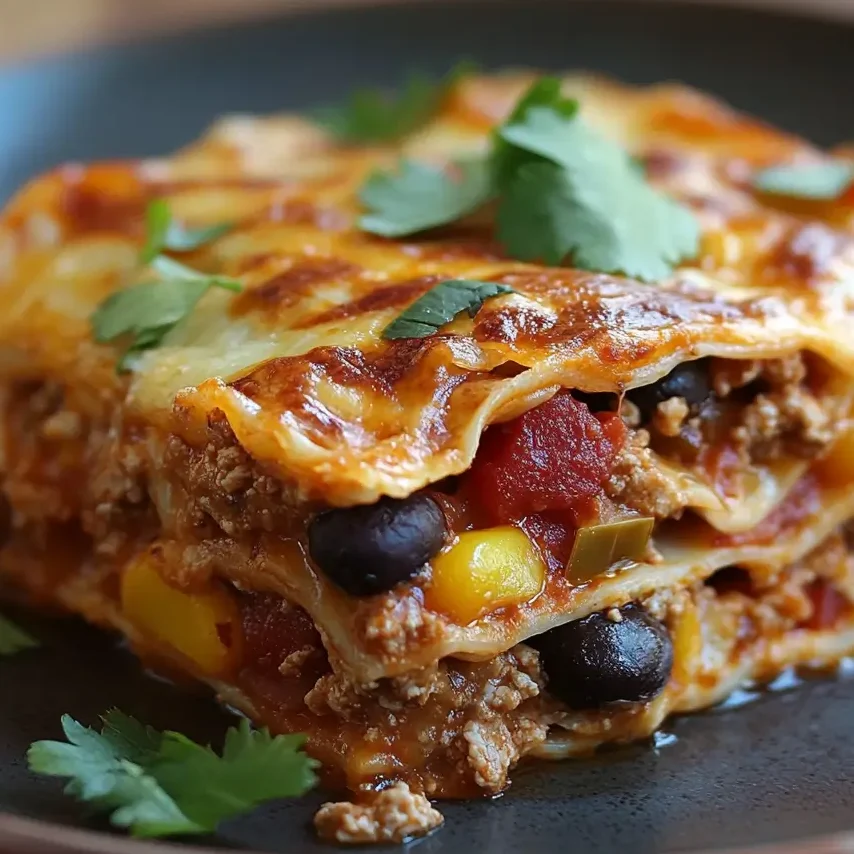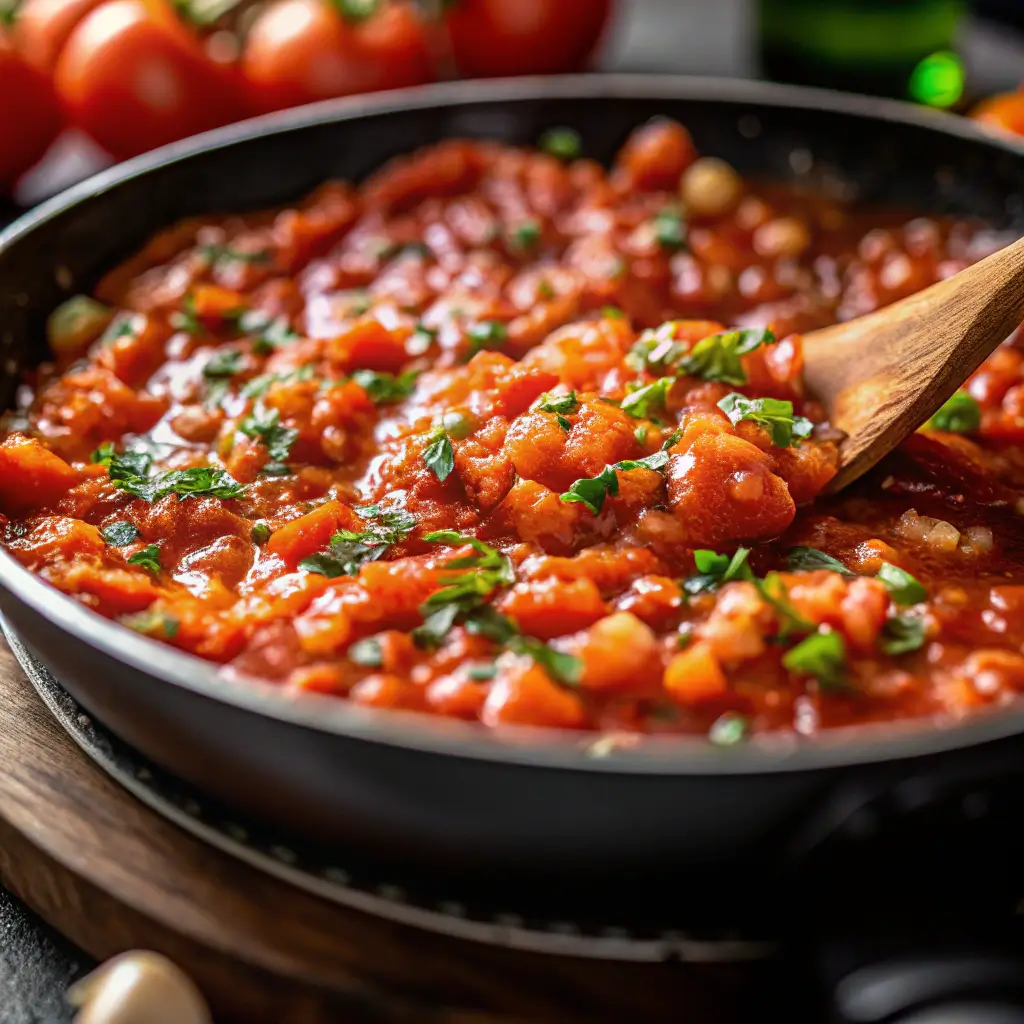Lasagna is a timeless comfort dish loved by millions, but even seasoned cooks can stumble into common traps when preparing it. From soggy layers to bland sauces, there’s a lot that can go wrong. This article dives into the dos and don’ts of lasagna-making, ensuring you know exactly what not to do when making lasagna.
We’ll cover mistakes at every stage—ingredient preparation, layering, baking, and even serving—so your lasagna turns out just right. Whether you’re using a family recipe or trying lasagna for the first time, this guide will steer you clear of pitfalls and help you achieve the perfect blend of flavors and textures.
Table of contents
Skipping Pre-Cooking for Ingredients
One of the biggest rookie mistakes when making lasagna is skipping crucial pre-cooking steps. Proper preparation ensures your dish isn’t undercooked or swimming in excess liquid, which can spell disaster for texture and flavor.
The Importance of Cooking Meat Properly
Under-seasoned or undercooked meat can ruin the heartiness of your lasagna. Ground beef, sausage, or even a meat substitute should be cooked thoroughly before layering. Sauté the meat with aromatics like onions and garlic to lock in rich flavors. Leaving it raw will not only affect the taste but also lead to uneven cooking, especially in thicker layers.

Why Pre-Cooking Lasagna Sheets Can Save Your Dish
Lasagna sheets may seem simple, but neglecting to prepare them can create chaos. If you’re using fresh pasta sheets, they need to be blanched briefly to firm them up. For dried lasagna sheets, pre-cooking them until they’re slightly softened ensures they won’t absorb too much sauce and become gummy.
Skipping this step often results in soggy lasagna, with layers that stick together or dissolve into mush. Avoid this by preparing each sheet properly—boil them individually and lay them flat on a towel to dry.
Choosing the Wrong Sauce
When it comes to lasagna, the sauce is the glue that holds everything together—literally and figuratively. Picking or preparing the wrong sauce is one of the most common blunders cooks make. Let’s explore what not to do when making lasagna and how to avoid these sauce-related slip-ups.
Avoiding Watery Tomato Sauce: Cooking Tips
Nothing spells disaster faster than a watery tomato sauce. Thin sauces seep into the pasta layers, turning your carefully crafted lasagna into a soggy mess. To prevent this, always cook your tomato sauce until it thickens. Even if you’re starting with passata or canned tomatoes, simmer them with herbs and spices for 15–20 minutes to reduce the liquid content.

Another trick? Avoid adding too much water when simmering your sauce. It’s better to have a sauce that’s slightly thicker than you think you need—pasta absorbs moisture during baking, and a dense sauce ensures the perfect texture. For thicker, richer sauces, explore tips in What Is the Difference Between Lasagna and Lasagne?.
Bechamel Blunders: Common Mistakes and Fixes
For a creamy, luxurious layer, bechamel sauce is a staple in many lasagna recipes. However, a poorly made bechamel can break your dish. A lumpy or overly thin sauce can spread unevenly, creating dry patches. To get it right, whisk constantly while cooking your butter and flour roux, then gradually add milk while continuing to stir.
Avoid seasoning the bechamel too lightly—this sauce needs salt, pepper, and sometimes a hint of nutmeg to enhance the flavors of the entire lasagna. If you skip seasoning here, you risk ending up with bland, unbalanced layers.For more sauce-making insights, visit What Not to Do When Making Lasagna.
Layering Mistakes That Ruin the Texture
Even if your sauces are spot-on, poor layering can destroy the texture of your lasagna. If you’re wondering what not to do when making lasagna, pay close attention to this crucial step.
Overloading the Layers: When Less Is More
It’s tempting to pile on all your favorite ingredients, but overloading your lasagna can lead to uneven cooking and a structure that collapses the moment you cut into it. Stick to thin, even layers—this helps everything bake evenly and creates the iconic lasagna look with distinct layers of pasta, sauce, and filling.
Another misstep? Using too much cheese in each layer. While cheese is a must-have, excessive amounts can overpower the dish and make it greasy. Balance is key—use just enough cheese to bind the layers without overwhelming them.
Not Balancing Wet and Dry Ingredients
A common culprit for soggy lasagna is failing to balance wet and dry elements. For example, layering vegetables like zucchini or spinach without pre-cooking or draining them can release extra water during baking. On the flip side, too many dry ingredients can leave your lasagna feeling dense and unappealing.
To get it right, always pat your vegetables dry and avoid adding too much sauce at once. Each layer should be evenly coated but not swimming in liquid. This ensures the pasta absorbs just enough moisture to cook properly without turning to mush.
Poor Ingredient Substitutions
Ingredient substitutions can seem like harmless shortcuts, but some swaps may backfire, leaving your lasagna far from what you hoped for. Knowing what not to do when making lasagna involves understanding which substitutions work and which don’t.
Why Passata Needs to Be Cooked Before Use
Passata, a smooth tomato puree, can be a great base for sauces—if prepared correctly. Using it straight from the jar, however, is a recipe for disaster. Uncooked passata is watery and lacks depth, which can result in a bland and overly wet lasagna. To fix this, simmer the passata for 10–15 minutes with garlic, basil, and seasoning to thicken and enhance its flavor.
Similarly, canned chopped tomatoes should also be cooked before use. Skipping this step will lead to excess liquid pooling in your dish, making the layers soggy and unpleasant.
Understanding What Goes on the Top Layer
The top layer of your lasagna deserves special attention. Some cooks think they can throw any leftover ingredients on top, but this misstep can ruin the dish’s presentation and taste. The golden rule? Always finish with either a generous layer of tomato or bechamel sauce. Sprinkle grated Parmesan or mozzarella over the sauce to create a golden crust.
Avoid piling fresh veggies or raw ingredients on the top, as these can dry out or burn during baking. Instead, save them for earlier layers, where they’ll blend harmoniously with other flavors.
For more delicious tips, check out our article on What Is Mexican Lasagna Made Of, where you’ll learn how different cuisines transform this classic dish.
Ignoring Proper Baking Techniques
Even with the best-prepped ingredients, poor baking practices can spell doom for your lasagna. Let’s examine what not to do when making lasagna during the baking process.
Why Foil Is Your Friend for Lasagna
Skipping the foil can lead to an overcooked, dry top layer before the rest of the dish is fully baked. Covering your lasagna with foil for the first 30–40 minutes traps steam, allowing the layers to cook evenly. Remove the foil for the last 10–15 minutes to achieve a perfect, bubbly crust without drying out the edges.
Remember, the oven temperature is just as critical. Baking lasagna at too high a heat can scorch the edges while leaving the center undercooked. Stick to 375°F (190°C) for an evenly baked result.
How to Avoid Overcooking or Undercooking
Timing is everything. Undercooking your lasagna leaves the pasta chewy and the flavors underdeveloped, while overcooking dries it out. A good rule of thumb is to bake the lasagna for 45–60 minutes, checking for bubbling edges and a slightly golden top as indicators of doneness.
Another common mistake is skipping the resting period after baking. Cutting into lasagna immediately causes it to fall apart, losing its structure and visual appeal. Let it rest for at least 15 minutes—this allows the layers to settle and firm up for clean slices.
Serving Lasagna Incorrectly
Making a perfect lasagna is only half the battle; serving it correctly is equally important. If you’re wondering what not to do when making lasagna, cutting corners during serving can undo all your hard work.
Why Resting Lasagna Is Crucial
The most common mistake when serving lasagna is not letting it rest after it comes out of the oven. While it’s tempting to dig in immediately, slicing too soon can result in a messy plate with layers that slide apart. Allowing the lasagna to rest for at least 15–20 minutes gives the layers time to settle and firm up. This resting period also enhances the overall flavor, as the ingredients meld together beautifully.
The Right Way to Portion and Serve
Another misstep is using the wrong tools to slice and serve. Avoid using knives with jagged edges, as they can tear the delicate pasta layers. Instead, use a sharp, flat-edged knife or a dedicated lasagna spatula for clean, even cuts.
When portioning, resist the urge to overload plates. Serving smaller squares helps maintain the integrity of the layers and makes the dish more visually appealing. Remember, lasagna is hearty enough that even a modest slice can satisfy.
Ignoring FAQs and Tips from Experts
Even experienced cooks can benefit from expert advice. Knowing what not to do when making lasagna often comes down to following tried-and-true tips.
How to Prevent Lasagna Sheets from Sticking Together
Sticky lasagna sheets are a common frustration, especially when pre-cooking pasta. The trick? Use a large pot of boiling water and cook only a few sheets at a time. Adding a drizzle of olive oil to the water and laying the cooked sheets on a towel to dry prevents them from clumping together.
Can You Use Raw Pasta Sheets? Why or Why Not
Some recipes suggest using raw pasta sheets, but this approach can be risky. If your sauce isn’t liquidy enough, the sheets may remain undercooked. Pre-cooking ensures the pasta softens properly and absorbs just the right amount of sauce. However, if you’re using high-quality, no-boil lasagna sheets, follow the package instructions closely to avoid issues.
For more pro tips, check out our site’s Lasagnaa Tacos Recipe to explore creative ways to reinvent this classic dish.

